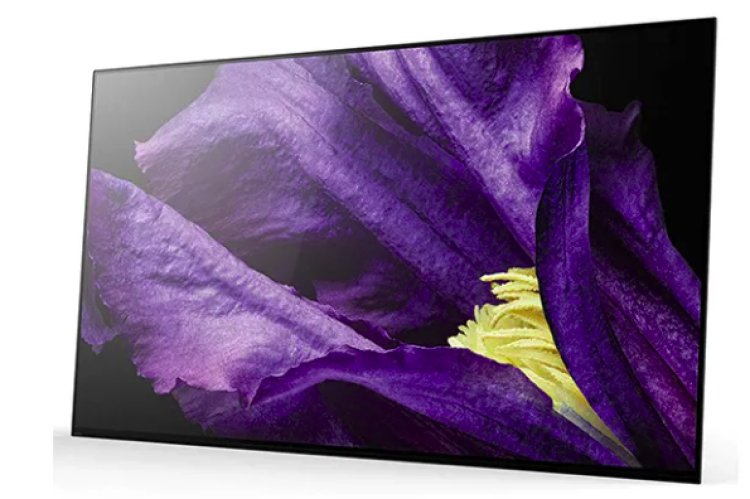How to choose a TV
Do you have to buy a new TV and you don't know how to extricate yourself from the many TV models in stores? Before making your choice, would you like to have some clarification on the technical characteristics that a good TV
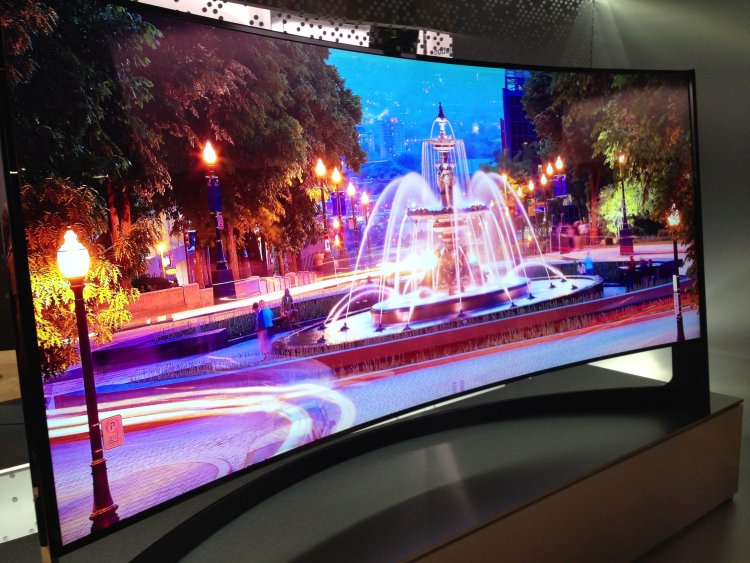
Do you have to buy a new TV and you don't know how to extricate yourself from the many TV models in stores? Before making your choice, would you like to have some clarification on the technical characteristics that a good TV must have in step with the times? On this page I hope to address all your doubts about buying the best TV for you.
Below I am writing you some key rules on how to choose a TV based on different needs, tastes and budgets. Follow them carefully and you will avoid buying obsolete or low-cost products compared to the retail price. Before getting to the heart of the matter, however, you have to make some fundamental choices: those relating to the maximum amount to spend and the minimum size of the TV to buy.
Keep in mind that up to 45 inches you can buy excellent televisions while remaining in a price range not exceeding 400 euros, once this threshold is exceeded, prices rise. Once you have established your budget and the minimum screen size to buy, you can move on to choosing your next TV by analyzing the technical characteristics of the latter. I wish you good reading and good choice!
Plasma, LCD, LED, OLED or Quantum Dot?
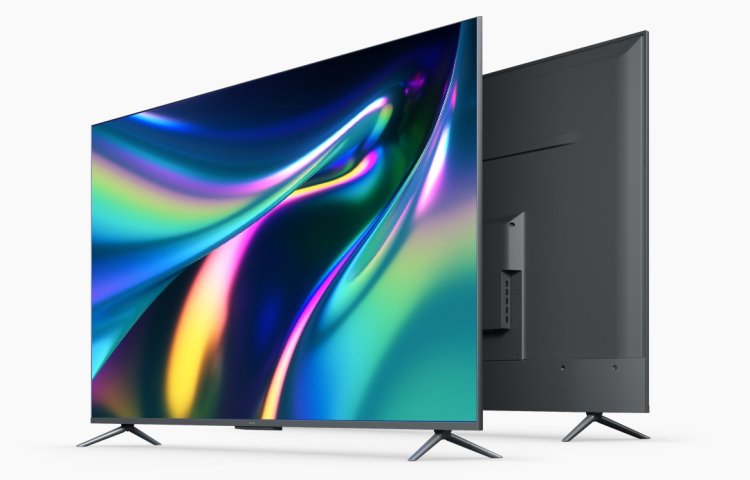
One of the first doubts that could come to you while walking in an electronics store or leafing through a flyer is: is it better an LED TV, an LCD, a plasma or an OLED? The answer to this question is clear-cut as far as I'm concerned.
While they can deliver better color rendition, plasma televisions use an outdated technology that has several disadvantages over LED TVs. They run out after a certain number of hours, consume much more power than LEDs, are thicker and suffer from the annoying ghosting effect that traces of previously played images leave on the screen. And there is also another question to consider: manufacturers have now stopped offering plasma TVs on the market.
The difference between LCD and LED , on the other hand, is minimal. The former are backlit with fluorescent lamps, the latter are always LCD (ie liquid crystal display) but with a LED backlight that guarantees lower energy consumption. There are two types of LED TVs: the Edge where the LCD panel is illuminated by LEDs arranged along the frame of the TV and the Full LEDs where the LEDs are arranged behind the LCD panel. The former are the most popular, the latter ensure better image quality but are also more expensive.
Among the technologies you need to know there is also the Quantum Dot , a backlighting technology of LED televisions that is based on microcrystals that are illuminated with a ray of blue light, in order to reproduce a very wide range of colors in a more specifies what the “classic” LED TVs do and therefore gets closer to the flexibility of OLED technology. Although this is a relatively new technology, it can be found in various models of televisions, especially the top of the range, of the main manufacturers.
What about OLED TVs ? This is the most advanced technology among those just mentioned, acronym for organic light emitting diode . OLED TVs, unlike LCD / LED TVs, do not use external light sources for screen illumination. Each pixel is able to emit light autonomously and this allows for reduced energy consumption, deeper blacks (because the black pixels go out completely) and thinner televisions. At the moment they still cost a lot, let's say too much, but they probably represent the future.
LED backlit OLEDs and LCDs are qualitatively equivalent, with both having advantages and disadvantages even in the higher segments of the market. The choice is up to you: if you want a TV that amazes you with deep, breathtaking images, an OLED TV may be your best bet; if instead you prefer an image more faithful to the real counterpart and not too artificial then I suggest you to stick to a traditional LED LCD display.
Resolution and Internet Connection

Now we come to some things to avoid . When choosing a TV , stay away from HD Ready TVs that have a resolution of 1280 × 720 pixels and do not allow you to fully enjoy the high definition content. To enjoy Blu-Ray and HD content without compromise, you have to buy a Full HD TV , that is, with a resolution of 1920 × 1080 pixels.
Better, but still not fundamental, are 4K Ultra HD TVs , which have a resolution of 3840x2160 pixels. There are many sold at reasonable prices, so I recommend that you take them seriously. If, for example, you use a latest generation console (for example the PlayStation 4 Pro), you can take advantage of 4K with video games, and the same thing is true with services such as Netflix or premium subscriptions of various kinds, which provide for the transmission of content in Ultra HD. To date, 4K TVs make more sense than in the past, however check if you really have this need, which is mainly useful with higher diagonal TVs (at least 40 inches).
I also point out the presence on the market of some 8K televisions , which have a resolution of 7680 × 4320 and use complex artificial intelligence algorithms to convert the signals produced in Full HD resolution or 4K Ultra HD resolution into 8K. Since there is still very little native content in 8K and given the exorbitant cost of these TVs, I don't think you need it, however the choice is yours.
Smart TV chapter . Almost all televisions on the market are now Smart TVs and support Internet connection (often with Wi-Fi included). By connecting the television to the large network, it is possible to take advantage of on-demand video content, rent films, review programs broadcast by the main national broadcasters and even communicate on social networks. Also, if you have a computer or hard drive connected to your home wireless network, you can access your videos, photos and your music directly from your TV without first copying it to a USB stick or external hard drive.
Smart TVs also have different price ranges: the cheaper ones in some cases may not have Wi-Fi (although it is now rare to find models that do not have this type of connection) and if you do not want to use an Ethernet cable to connect them to the Internet you need to buy external adapters (which cost about 30 euros) or use powerline devices .
They also differ in the operating system used and the power of their hardware . The operating system determines the number and quality of apps available on a TV, as well as its ease of use. Among the most popular software platforms at the moment are Samsung's Tizen OS, LG's WebOS and Android TV, currently adopted by Sony and other manufacturers, thanks to which it is possible to download all the apps available for Android smartphones and tablets to the TV (as far as concerns Android, beware of cheaper TVs, as they have a version of the operating system without certification that makes it impossible to run many contents, such as those in FHD / 4K resolution on Netflix).
The hardware characteristics of televisions, such as the processor , affect the speed at which applications run and you can switch between tasks.
Another factor to consider in Smart TVs, those with wireless support, is their compatibility with technologies such as Google Cast , AirPlay 2 , Miracast and DLNA , which allow you to transmit audio / video content to the TV wirelessly and to perform mirroring of smartphones and tablets (except DLNA). You can find more information on these technologies in my tutorial on how to connect the mobile phone to the TV .
If you are not particularly interested in Smart functions, know that you can turn traditional TVs into Smart TVs using devices such as Google Chromecast , Amazon Fire TV Stick , Apple TV and Android TV Boxes . I told you more about it in my article on the subject.
3D support and curved TVs
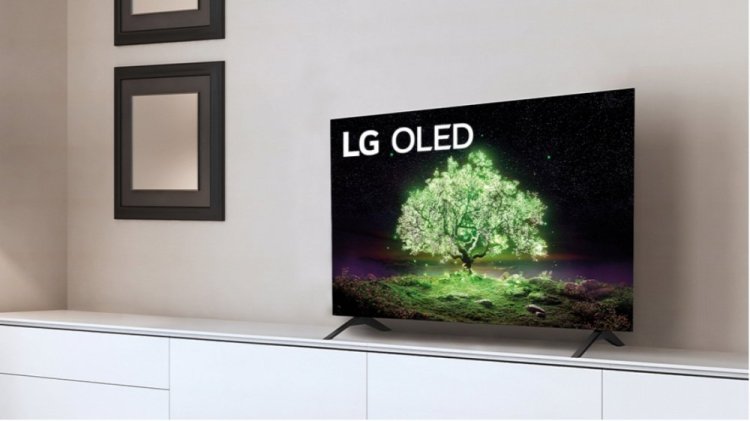
Finally, let's talk about 3D TVs . In the past, in electronics stores, televisions compatible with 3D content were viewed through glasses. You could find two different types: those with active 3D which ensured higher quality but which could only be used with the glasses supplied by the manufacturer of the TV and those with passive 3D which instead allowed the use of low-cost glasses, such as those of cinema. I covered the subject in more depth in my post on 3D TVs , I suggest you check it out.
The technology has been mistreated by end users, who have never seen 3D as something truly innovative and indispensable in the choice of a TV or in the way of living a multimedia experience. 3D has been gradually supplanted by manufacturers in favor of new technologies, such as 4K I was talking about above or HDR which I will tell you about later.
The curved panels, on the other hand, ensure a more enveloping viewing experience than traditional TVs - at least for those in front of the screen - but they are still quite expensive. Furthermore, to be effective they must have quite large dimensions (say from 50 ″ upwards). At the moment I recommend them only to those who want the best in technology and have a very spacious room in which to install them.
Image quality

There are also other technical characteristics to consider before buying a TV that establish what we can define the image quality. I'll list them below. These are all features you should carefully consider before buying a TV if you don't want to be disappointed with washed-out colors, unsatisfactory brightness, or animations that aren't smooth enough.
- Refresh rate - is the refresh rate of the images on the screen, expressed in Hz. The standard values of the refresh rate for the European market are 50Hz, 100Hz and 200Hz, those for the North American market are 60Hz, 120Hz and 240Hz but some manufacturers also use higher digits (eg 400Hz, 800Hz or 1000Hz) to emphasize the adoption of image enhancement technologies that make the most hectic scenes smoother. Basically, the higher this value, the more “fluid” the sequences reproduced on the screen are.
- Brightness - if you want to find out what is the maximum brightness level reached by a TV, check the relative value in Nit (cd / m2) in the device's data sheet. This Wikipedia page will help you better understand how to interpret these values.
- Contrast - the contrast ratio of a TV, that is the difference in contrast between a white image and a black image, is expressed using the formula "x: 1" where instead of "x" there is a number that indicates the brightness level of white relative to black.
- Viewing angle - indicates the maximum angle from which images reproduced on a TV can be viewed without distortion (without color loss, etc.). It is indicated by the formula "x: x", where instead of "x" there is the maximum viewing angle.
- Input lag - is a value, expressed in milliseconds (ms), which indicates the delay between the input of a command and its display on the screen. Pay close attention to this parameter if you are a gamer with advanced needs.
- HDR (short for High Dynamic Range ) - it was in a certain sense borrowed from the world of photography and allows televisions to show us all those shades of light, shadow and color that we normally cannot see, so the image on the screen is more realistic. It is currently only supported by some top-of-the-range TVs, such as Samsung SUHDs, some Sony Bravia models and some LG OLED TVs, but its popularity may soon increase.
Other characteristics
There are other technical features that you need to consider when buying a TV that, on the other hand, do not affect the quality of the images. Among these we find, for example, the Energy consumption , which is specified in "classes" like other household appliances. Those of class D are the worst (therefore those who consume the most), those of class A +++ the best (therefore those who consume the least). Then there is the guarantee : if you have decided to buy your next TV on the Internet and have chosen an imported model, make sure that the guarantee complies with European standards or you could have nasty surprises in case of device failure.
Also carefully consider the number of HDMI ports and USB ports available on your TV. Nowadays there are many devices that need an HDMI port to be connected to the TV: decoder, video game console, set-top box, HDMI dongle (eg Chromecast ) etc. and being "dry" of free doors can be a big problem. The same goes for the USB ports, which can be used to play or record multimedia contents on external hard drives or drives or to power / charge various devices.
If you intend to connect your TV to a receiver or an external audio system I recommend that you buy one with an optical audio output that allows you to get the best out of this type of device. If there is no optical output, you can connect speakers and other audio devices to your television via HDMI or via the headphone jack.
When buying a new TV, also pay attention to the transmission standards supported by it: DVB-T indicates that the TV offers support for “standard” digital terrestrial; DVB-T2 , on the other hand, concerns support for next-generation digital terrestrial; while DVB-S and DVB-S2 characterize TVs equipped with a satellite tuner. Also take into account that full support for the new generation digital terrestrial is guaranteed only by the models which, in addition to compatibility with DVB-T2 technology, also support the H.265 / HEVC code . Take that into account, understood?
Another feature that must absolutely not be missing in your next TV is the presence of the Common interface Plus (CI +) slot, the slot in which the CAM is inserted to read the smart cards of the digital terrestrial pay TV. Now this component is present on the vast majority of televisions but before making a purchase it is always better to check its availability.
Which TV to buy
At this point you should have quite clear ideas about which type of TV to choose, so let me give you some "ideas" by proposing some of the TVs that currently offer the best value for money.
Best budget TV (less than 250 €)
Let's start this discussion starting with some cheap televisions , ideal for those with a budget of less than 250 euros .
Xiaomi Mi Smart TV 4A / 4S - 32 ″
Also in Italy Xiaomi has taken the field in the world of televisions, with very valid products especially as regards the quality-price ratio. Two products that I recommend: the super cheap Xiaomi Mi Smart TV 4A 32 ″, which costs less than 200 euros, supports HD Ready resolution and can also connect to the Internet; Xiaomi Mi Smart TV 4S , more powerful and capable of supporting 4K Ultra HD resolution within a 43 ″ diagonal. They both use Android TV 9.0.
Technical features
- Type - LED.
- Resolution - 4K Ultra HD
- Smart TV - Yes.
- 3D Support - No.
- Inputs - 3 HDMI, 3 USB (2 on 4A), 1 Ethernet, Composite Video In, Headphone Out, Optical Out.
- Common interface Plus (CI +) slot - Yes.
- Supported TV standards - DVB-T2 / S2 / C.
Samsung T4000 Series - 32 ″
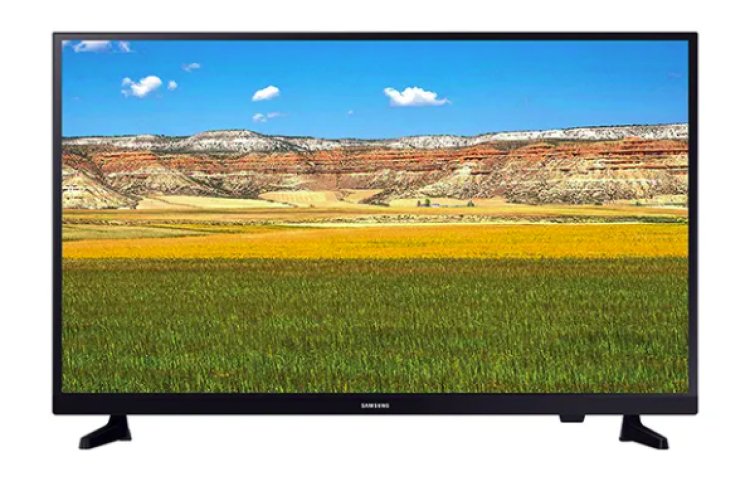
If, on the other hand, you want to stay in the Samsung home and intend to buy an intermediate-sized model, I suggest the Samsung T4000 Series TVs , which does not have Internet access and supports HD Ready resolution. It has two HDMI ports, DVB-T2 tuner, a USB port, and good picture quality.
Technical features
- Type - LED.
- Resolution - HD Ready.
- Smart TV - No.
- 3D Support - No.
- Inputs - 2 HDMI, 1 USB, 1 Component YpbPr / YCbCr, headphone jack, optical audio.
- Common interface Plus (CI +) slot - Yes.
- Supported TV standards - DVB-T2 / S2 / C.
Hisense BE5500 Series - 32 ", 40"

Hisense , a well-known manufacturer of televisions characterized by their excellent value for money, boasts in its list two TVs belonging to the BE5500 series : the first 32 ″ with HD Ready resolution; the second from 40 ″ in Full HD. Both models integrate Wi-Fi connectivity, the Vidaa U operating system, 2 HDMI ports, 2 USB, optical digital output and headphones.
Technical features
- Type - LED.
- Resolution - HD Ready / Full HD.
- Smart TV - Yes.
- 3D Support - No.
- Inputs - 2 HDMI, 2 USB, Headphone Out, 1 Ethernet, Optical Digital Out, Headphone Out.
- Common interface Plus (CI +) slot - Yes.
- Supported TV standards - DVB-T2 / S2 / C.
Samsung TU7090 Series - 43 ", 50"
Samsung 's TU7090 Series includes versatile and very good products at an extremely competitive price. I suggest the 43 and 50 "models, ideal for the vast majority of environments. The picture quality is quite good, and support for 4K Ultra HD resolution and Internet connectivity is guaranteed. They also support HDR content and various voice assistants that allow you to manage basic functions even through voice.
Technical features
- Type - LED.
- Resolution - 4K Ultra HD
- Smart TV - Yes.
- 3D Support - No.
- Inputs - 2 HDMI, 1 USB, 1 Ethernet, optical output.
- Common interface Plus (CI +) slot - Yes.
- Supported TV standards - DVB-T2 / S2 / C.
Best mid-range TV (under € 800)
With a budget of less than about 800 euros (but, in any case, more than 350 euros) it is possible to buy mid-range televisions which are an excellent middle ground between entry level and high-end models .
Samsung TU8070 Series - 43 ", 50", 55 ", 65"
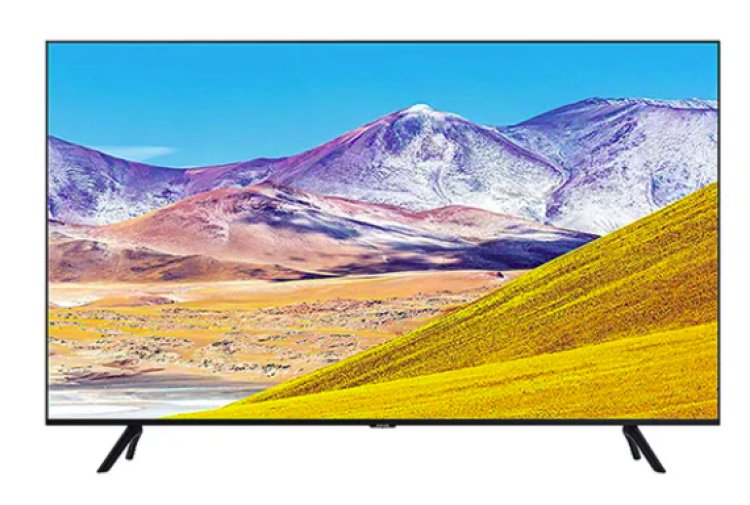
If you are looking for a Samsung TV that knows how to give you satisfaction, but you don't want to spend a fortune, the TU8070 Series models could be the right ones for you. We have models from 43 to 75 ", but the latter has a significantly higher list price than the others in the same family. These televisions support HDR, implement the proprietary Tizen operating system and can also be used with the latest generation DVB-T2 broadcasts. Three HDMI ports, two USB.
Technical features
- Type - LED.
- Resolution - 4K Ultra HD.
- Smart TV - Yes.
- 3D Support - No.
- Inputs - 3 HDMI, 2 USB, 1 Component Input (Y / Pb / Pr), headphone jack, optical audio.
- Common interface Plus (CI +) slot - Yes.
- Supported TV standards - DVB-T2 / S2 / C.
LG Nano Series 80 - 49 ", 55", 65 "
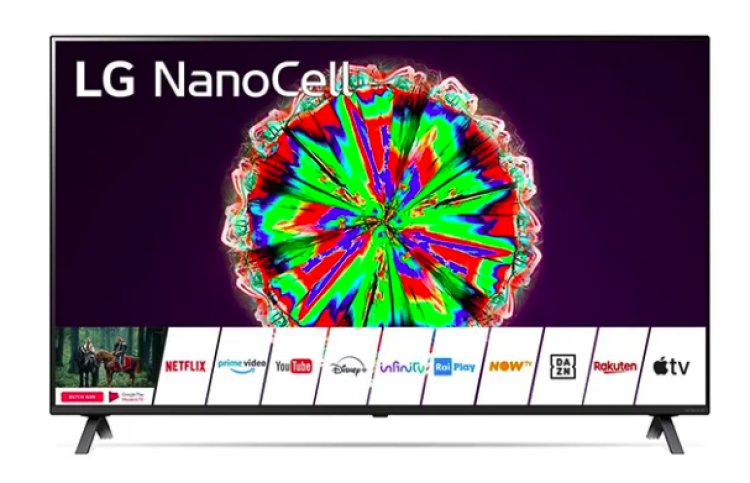
Among the best mid-range televisions ever, I can only recommend the models of the LG Nano 80 family , which adopt the proprietary NanoCell TV technology with local dimming, to manage the various areas of the backlight independently and offer excellent results in HDR. They integrate webOS, support wireless Internet connection and Bluetooth. The user experience is then made easier by the support for artificial intelligence, which facilitates the process of searching for content to watch at any time. We have several diagonals in this family, reaching up to 65 ″.
Technical features
- Type - LED.
- Resolution - 4K Ultra HD.
- Smart TV - Yes.
- 3D Support - No.
- Inputs - 4 HDMI, 2 USB, headphone jack, optical audio, 1 Ethernet.
- Common interface Plus (CI +) slot - Yes.
- Supported TV standards - DVB-T2 / S2 / C.
Sony 7096 Series - 49 ", 55"
Sony's 7096 series , on the other hand, includes Smart TVs with 4K Ultra HD resolution with resolutions ranging from 43 ″ up to 65 ″. They support HDR technology and, thanks to Motionflow XR 400Hz technology, they also guarantee excellent fluidity of images. I suggest the 49 "and 55" models in this price range, which are also excellent in terms of image quality.
Technical features
- Type - LED.
- Resolution - 4K Ultra HD.
- Smart TV - Yes.
- 3D Support - No.
- Inputs - 3 HDMI, 3 USB, Component In (Y / Pb / Pr), headphone jack, optical audio, 1 Ethernet.
- Common interface Plus (CI +) slot - Yes.
- Supported TV standards - DVB-T2 / S2 / C.
Philips 6800 Series - 43 ", 50", 55 "
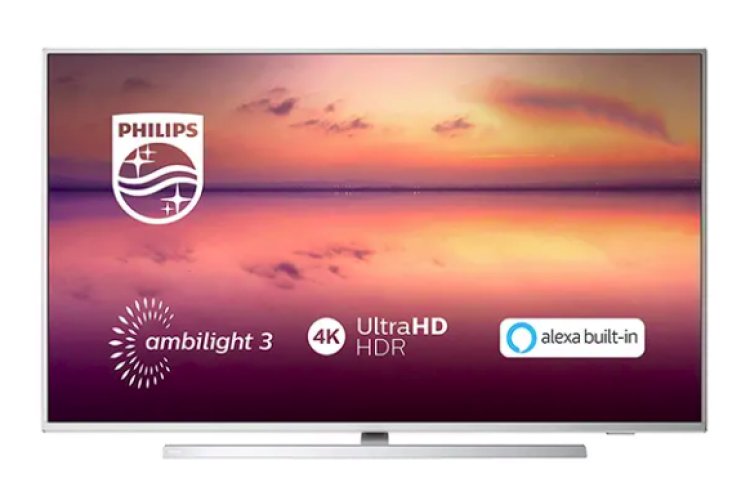
You have surely heard of Ambilight technology, which is the prerogative of TVs made by Philips. In the 6800 Series , which is characterized by excellent value for money, it is present together with HDR 10+, Dolby Vision and Dolby Atmos support. But what does Ambilight do? TVs with the technology integrate LEDs in the back, which reflect the dominant colors of each scene being played back on the wall in real time. Philips TVs use Android TV, connect to the internet via Wi-Fi and support 4K Ultra HD resolution on all models.
Technical features
- Type - LED.
- Resolution - HD Ready
- Smart TV - No.
- 3D Support - No.
- Inputs - 2 HDMI, 1 USB.
- Common interface Plus (CI +) slot - Yes.
- Supported TV standards - DVB-T2 / S2 / C.
Samsung Q60R Series - 49 ", 55", 65 ", 75"

Samsung Q60R Series is made up of several models, all with Quantum Dot technology that guarantees a very high color saturation, unlike the most common IPS LCDs, almost comparable to that of an OLED. These are Samsung's cheapest “QLED” TVs, offering wide dynamic range, HDR, 100% color volume, and image handling via the integrated Quantum, 4K processor. You can buy a Samsung Q60R TV in different diagonals, even 75 ″ if you have a large room available.
Technical features
- Type - Quantum Dot.
- Resolution - 4K Ultra HD.
- Smart TV - Yes.
- 3D Support - No.
- Inputs - 4 HDMI, 2 USB, Component In (Y / Pb / Pr), headphone jack, optical audio.
- Common interface Plus (CI +) slot - Yes.
- Supported TV standards - DVB-T2 / S2 / C.
Samsung Q70R Series - 55 ", 65", 75 "
Staying at Samsung, I also point out the Q70R series , which is embellished with models with Quantum Dot technology. The televisions are available in 55 ", 65" and 75 "sizes and feature 4x Full Array backlit panels that enable exceptional contrast ratio accuracy.
Technical features
- Type - Quantum Dot.
- Resolution - 4K Ultra HD.
- Smart TV - Yes.
- 3D Support - No.
- Inputs - 4 HDMI, 2 USB, Component In (Y / Pb / Pr), headphone jack, optical audio.
- Common interface Plus (CI +) slot - Yes.
- Supported TV standards - DVB-T2 / S2 / C.
Philips OLED Series 7 - 55 ", 65"

Philips OLED 7 Series should also be considered, since it offers TVs with 55 "and 65" panels, characterized by excellent image contrast, support for Ambilight technology, which makes it possible to synchronize images to some rear LEDs, which reflect the colors on the rear wall making the surrounding environment part of the scene reproduced on the screen.
Technical features
- Type - OLED.
- Resolution - 4K Ultra HD.
- Smart TV - Yes.
- 3D Support - No.
- Inputs - 4 HDMI, 2 USB, Component In (Y / Pb / Pr), headphone jack, optical audio.
- Common interface Plus (CI +) slot - Yes.
- Supported TV standards - DVB-T2 / S2 / C.
Samsung The Frame (2020) - 32 ", 43", 50 ", 55", 65 "
Before buying this high-end TV I warn you, picture quality is not its forte. It charges a lot mainly because it is a very special TV. In fact, the Samsung The Frame adopts a customized version of Samsung Tizen that allows you to reproduce paintings on the screen (via internet or via USB drive), literally blending into the environment as if it were a real painting. The models in this family are all 4K Ultra HD and support HDR, using Quantum Dot panels: I suggest the 2020 versions due to the improvements in image quality compared to the previous ones. This generation starts at 32 ″ with a fairly low price, but the larger models have much higher list prices.
Technical features
- Type - LED.
- Resolution - 4K Ultra HD.
- Smart TV - Yes.
- 3D Support - No.
- Inputs - 4 HDMI, 3 USB, Component Input (Y / Pb / Pr), headphone jack, optical audio.
- Common interface Plus (CI +) slot - Yes.
- Supported TV standards - DVB-T2 / S2 / C.
LG OLED AI ThinQ C8 - 55 ", 65", 77 "
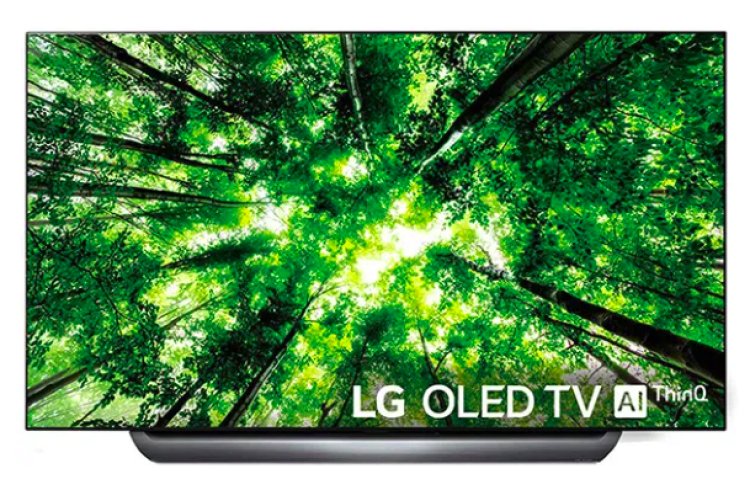
LG OLED AI ThinQ C8 is a family of high-end LG Smart TVs, which features models available in 55 ", 65" and even 77 "sizes, whose Cinema HDR panel offers outstanding picture quality to say the least. They offer support for Dolby Atmos, WebOS operating system and, as regards the allocation of ports, we find 4 HDMI and 3 USB.
Technical features
- Type - OLED.
- Resolution - 4K Ultra HD.
- Smart TV - Yes.
- 3D Support - No.
- Inputs - 4 HDMI, 3 USB, Component Input (Y / Pb / Pr), headphone jack, optical audio.
- Common interface Plus (CI +) slot - Yes.
- Supported TV standards - DVB-T2 / S2 / C.
Samsung QLED 8K Q950R Series - 65 ", 75", 98 "
I'll tell you right away: you don't necessarily need an 8K TV right now. This is because there is very little native resolution content, and TVs like those in the QLED 8K Q950R series use artificial intelligence to transpose playback images to panel resolution. We are talking about a huge resolution of 7680 × 4320 pixels, spread on these models within diagonals starting from 65 ", up to as many as 98". They also use a dedicated Quantum 8K processor and support Quantum HDR 4000 technology. Like any Samsung Smart TV they use the Tizen operating system.
Technical features
- Type - QLED.
- Resolution - 8K Ultra HD.
- Smart TV - Yes.
- 3D Support - No.
- Inputs - 4 HDMI, 3 USB, optical audio.
- Common interface Plus (CI +) slot - Yes.
- Supported TV standards - DVB-T2 / S2 / C.
Sony AF9 Series - 55 ", 65"
